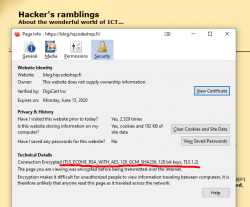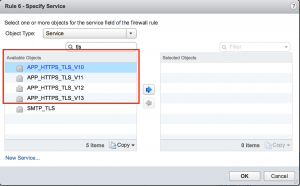

Once the client and server have agreed to use TLS, they negotiate a stateful connection by using a handshaking procedure (see § TLS handshake). Another mechanism is to make a protocol-specific STARTTLS request to the server to switch the connection to TLS – for example, when using the mail and news protocols. Port 80 is typically used for unencrypted HTTP traffic while port 443 is the common port used for encrypted HTTPS traffic. One of the main ways of achieving this is to use a different port number for TLS connections. Since applications can communicate either with or without TLS (or SSL), it is necessary for the client to request that the server set up a TLS connection. TLS builds on the now-deprecated SSL ( Secure Sockets Layer) specifications (1994, 1995, 1996) developed by Netscape Communications for adding the HTTPS protocol to their Navigator web browser.Ĭlient-server applications use the TLS protocol to communicate across a network in a way designed to prevent eavesdropping and tampering.

TLS is a proposed Internet Engineering Task Force (IETF) standard, first defined in 1999, and the current version is TLS 1.3, defined in August 2018. In technical writing, references to "( D) TLS" are often seen when it applies to both versions. The closely related Datagram Transport Layer Security ( DTLS) is a communications protocol that provides security to datagram-based applications. It runs in the presentation layer and is itself composed of two layers: the TLS record and the TLS handshake protocols. The TLS protocol aims primarily to provide security, including privacy (confidentiality), integrity, and authenticity through the use of cryptography, such as the use of certificates, between two or more communicating computer applications. The protocol is widely used in applications such as email, instant messaging, and voice over IP, but its use in securing HTTPS remains the most publicly visible. Starting January 13, 2020, for Chrome 79 and higher, we will show a “Not Secure” indicator for sites using TLS 1.0 or 1.Transport Layer Security ( TLS) is a cryptographic protocol designed to provide communications security over a computer network.
#Deprecated tls versions full#
To ease the transition to the final removal of support and to reduce user surprise when outdated configurations stop working, Chrome will discontinue support in two steps: first, showing new security indicators for sites using these deprecated versions and second, blocking connections to these sites with a full page warning. While legacy TLS usage has decreased, we still see over 0.5% of page loads using these deprecated versions. Site administrators should immediately enable TLS 1.2 or later to avoid these UI treatments. In this post we’re announcing a pre-removal phase in which we’ll introduce a gentler warning UI, and previewing the UI that we’ll use to block TLS 1.0 and 1.1 in Chrome 81. Last October we announced our plans to remove support for TLS 1.0 and 1.1 in Chrome 81. Check the Chrome Platform Status entry for the latest information about the removal of TLS 1.0 and 1.1 support.

Our hope is that this will help alert affected site owners ahead of the delayed removal. Chrome will continue to show the “Not Secure” indicator for sites using TLS 1.0 or 1.1, and Chrome 81 Beta will show the full page interstitial warning for affected sites.
#Deprecated tls versions update#
Update (): The removal of legacy TLS versions was originally scheduled for Chrome 81, but is being delayed until at least Chrome 84. Posted by Chris Thompson, Chrome security team


 0 kommentar(er)
0 kommentar(er)
